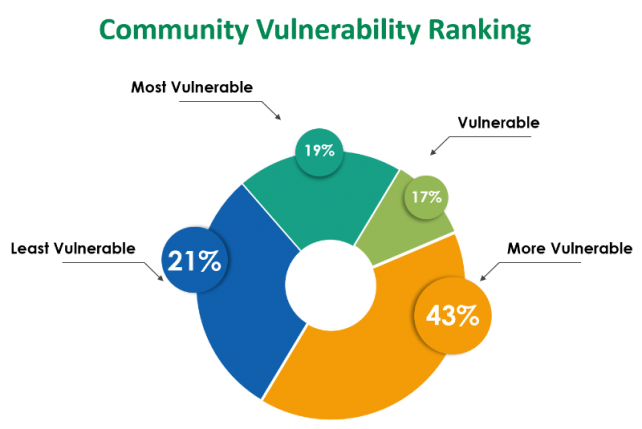 The Climate Resilience Execution Agency for Dominica (CREAD) has said that it has identified the most vulnerable communities in Dominica and is putting together a plan to ensure that they become climate-resilient.
The Climate Resilience Execution Agency for Dominica (CREAD) has said that it has identified the most vulnerable communities in Dominica and is putting together a plan to ensure that they become climate-resilient.
The findings came from a CREAD-developed-and-administered Resilience Tracker (that was approved by the Office of Disaster Management (ODM) and the Local Government Commissioner) from September 2019, to 41 village councils and five (5) communities not covered by councils. The Tracker covered an assessment of the physical vulnerability of communities, and the extent to which they have in place infrastructure and other systems to manage if isolated following a natural disaster.
Responses were received at the end of November, and from the analysis, communities were categorized into four groups based on their scores out of 100. The ultimate goal is the presentation of an initial analysis of vulnerable communities to the CREAD Policy Board in January 2020, development of Resilience Plans for those communities by March 2020, and incorporation of the requisite funding requirements into the budget-setting process, allowing the most vulnerable communities to implement key recommendations by the end of 2020.
Based on an analysis of the exercise, 13 communities are considered most vulnerable, 29 more vulnerable, 11 vulnerable, and 14 least vulnerable.
CREAD’s Community Resilience and Capital Projects Teams will commence working with the most vulnerable communities to undertake detailed assessments and make specific recommendations for enhancing their disaster risk reduction and disaster management structures, capabilities and facilities between January and March 2020.

It would be useful for the general public to understand what measuring criteria were used to classify the four groups of vulnerable people in our population. Secondly, a quantification of each group as well as what percentage of the entirely population they represent would help for us to understand the magnitude of this issue. Without figures it is practically impossible to make an accurate assessment, beyond any anecdotal observation.
The vulnerability of communities, as the news release implies, is related to their isolation in the event of a national disaster. By extension this includes the island’s physical infrastructure and in particular the major road network. It also involves the utility services.
Over the last two weeks, heavy rainfall resulted in the temporary closure of the Imperial Highway at Bells and there has been further land slippage Antrim. On the north/south route the collapse of Canefiled Cliff is a disaster waiting to happen.
We still carry electricity and land-line telecommunications about on poles and the main water feed pipe for the west of the island, as it approaches DOWASCO’s new filtration plant, is held in place with higgledy-piggledy stakes driven into the ground.
If attention is given to the major routes and services the outlying communities will stand a better chance of their accessibility and services being restored.
2 1/2 years after hurricane Maria
it appears like we sleep walking to skerrit overly ambitious shout that Dominica will be the first climate resilient country in the world.
i think they just using Dominica as a test case…..it’s carefully planned
while we waiting to see de results of a climate resilient Dominica issues like the road failure in Belles will continue to plague us
layou river is a natural disaster zone….have you tried driving up the layou valley from the broken layou bridge?
i take note that roosevelt skerrit is de minister for resilience